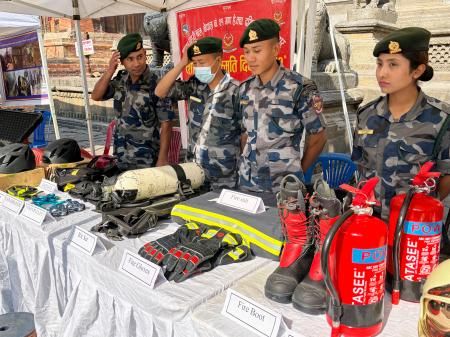Nepal's Earthquake: Progress and Challenges – A Decade of Recovery
Ten years after the devastating 2015 Nepal earthquake, the nation continues its journey of recovery. While significant progress has been made in rebuilding infrastructure and communities, formidable challenges remain. This article examines the advancements and obstacles Nepal faces in its ongoing earthquake recovery efforts.
Progress Made: A Resilient Nation
The immediate aftermath of the 7.8 magnitude earthquake, which struck on April 25, 2015, saw an outpouring of international aid and a remarkable display of resilience from the Nepali people. The initial emergency response, though hampered by logistical difficulties in accessing remote areas, saved countless lives and provided essential relief.
Infrastructure Rebuilding:
- Housing Reconstruction: A significant portion of destroyed homes have been rebuilt, largely thanks to government initiatives and international support programs. The National Reconstruction Authority (NRA) played a crucial role in coordinating these efforts, offering financial assistance and technical guidance to affected families. However, challenges persist in ensuring the quality and earthquake-resistance of new constructions.
- Improved Building Codes: Post-earthquake, Nepal has implemented stricter building codes and promoted earthquake-resistant construction techniques. This focus on resilience is vital for future disaster preparedness. Training programs for builders and architects are crucial in ensuring widespread adoption of these new standards.
- Infrastructure Upgrades: Roads, bridges, and other vital infrastructure have been repaired and strengthened, improving connectivity and access to essential services, particularly in rural areas. This improved infrastructure is not only crucial for daily life but also critical for economic recovery and tourism.
Community Resilience and Development:
- Community-Based Reconstruction: Many reconstruction efforts emphasized community participation, empowering local people to rebuild their homes and livelihoods. This bottom-up approach has fostered a sense of ownership and local capacity building.
- Disaster Risk Reduction Programs: Increased focus on disaster risk reduction (DRR) initiatives, including early warning systems and community-based preparedness plans, aims to mitigate the impact of future disasters. This proactive approach is essential for long-term resilience.
- Economic Recovery: While the earthquake severely impacted Nepal's economy, the subsequent reconstruction efforts have stimulated economic growth in certain sectors, particularly construction and related industries. Sustainable economic recovery remains a priority.
Challenges That Persist: The Road Ahead
Despite the progress, Nepal still faces significant hurdles in its long-term recovery:
Ongoing Reconstruction Needs:
- Completion of Reconstruction: While considerable progress has been made, many homes and public buildings remain unreconstructed, leaving vulnerable populations exposed to future disasters. Funding limitations and bureaucratic hurdles continue to hamper progress.
- Quality Control Issues: Ensuring the quality and durability of newly constructed buildings remains a concern. Monitoring and enforcement of building codes are crucial to prevent future structural failures.
- Addressing Inequality: The earthquake disproportionately affected marginalized communities, exacerbating existing inequalities. Addressing these disparities is crucial for equitable recovery and long-term development.
Future Disaster Preparedness:
- Vulnerability to Future Earthquakes: Nepal remains highly vulnerable to future seismic events. Continued investment in earthquake-resistant infrastructure and DRR programs is paramount.
- Climate Change Impacts: The increasing frequency and intensity of extreme weather events, exacerbated by climate change, pose additional challenges to Nepal’s recovery efforts. Integrating climate resilience into reconstruction plans is crucial.
- Limited Resources: Nepal's limited financial and human resources pose significant challenges to its long-term recovery and development goals. Continued international support and effective resource management are essential.
Conclusion: A Continuing Journey
Nepal's earthquake recovery has been a testament to the resilience of its people and the generosity of the international community. While considerable progress has been made, significant challenges remain. Continued commitment to reconstruction, improved disaster preparedness, and equitable development are crucial for ensuring a sustainable and resilient future for Nepal. The journey to complete recovery is ongoing, demanding sustained efforts from the government, international partners, and the Nepali people themselves.
Call to Action: Learn more about organizations supporting Nepal's earthquake recovery and consider contributing to their efforts. Supporting sustainable development and disaster resilience initiatives is vital for Nepal's future.
